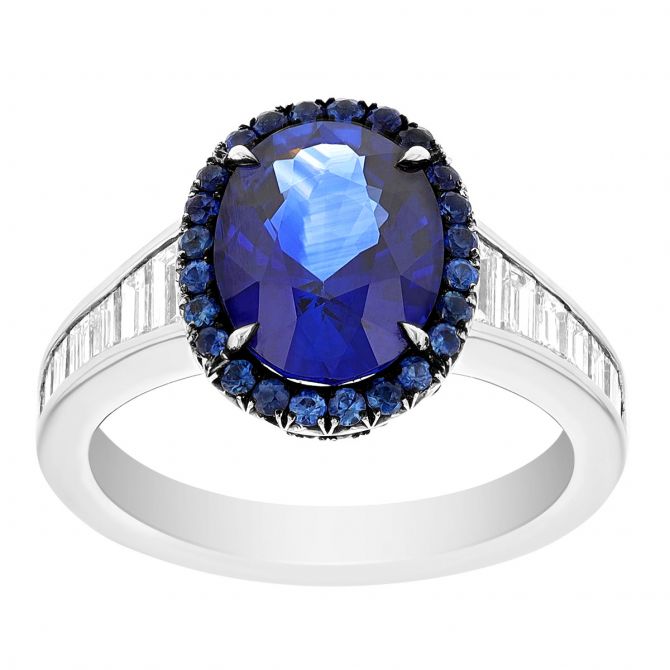When it comes to engagement rings, diamonds have long been the reigning gemstone of choice. However, contemporary couples are increasingly drawn to alternative engagement ring stones that not only reflect their own style and character but also align with their values and budget. Whether you’re seeking a more affordable option or a distinctive and colorful choice, there’s a wealth of beautiful gemstones waiting to grace your finger. Read on to explore some of the most captivating alternatives to traditional diamond engagement rings, each with its own unique charm and appeal.
But first, why are more couples considering non-diamond engagement rings?
The benefits of non-diamond engagement rings are multifaceted. One major catalyst is ethical and environmental concerns arising from issues within the diamond industry, such as conflict and mining-related environmental damage. This has prompted modern couples to explore alternatives like lab-grown diamonds and responsibly sourced gemstones, embracing a conscious consumer approach.
Moreover, affordability plays a pivotal role in this shift, as diamonds can be exorbitantly expensive, making non-diamond engagement rings an alluring choice. Beyond affordability, which allows couples to allocate resources differently, perhaps towards their wedding, honeymoon, or future plans, these rings exude unique aesthetics, boasting a diverse range of colors and appearances that ensure a one-of-a-kind and eye-catching ring that stands out from most everyone on your social feed.
With non-diamond alternatives, the vast array of colors and properties allows for personalization and creativity in ring design. Different gemstones carry distinct symbolic meanings, enabling couples to select a non-diamond alternative that resonates with their relationship or personal values, imbuing their engagement or wedding ring with added depth and significance.
It’s clear that the benefits of diamond alternatives are multifaceted; however, it’s crucial to acknowledge the downsides of engagement rings that are not diamonds. Some alternative engagement ring stones, such as emeralds and pearls, may exhibit less durability than diamonds, necessitating additional care to prevent damage or scratching over time. Additionally, limited availability can pose a challenge when seeking specific diamond alternatives in desired sizes, shapes, and qualities, particularly for rarer stones.
Despite these considerations, the allure of non-diamond engagement rings remains strong, offering couples an array of captivating alternatives that align with their values, style and budget. Keep reading, and we’ll offer further insights on the top 8 alternative center stones for engagement rings.

Lab-Grown Diamond
Lab-grown diamonds have been gaining popularity as a more affordable and ethically conscious alternative to mined diamonds. These diamonds are chemically identical to natural ones but are created in a controlled environment. They offer the same brilliance and durability as mined diamonds, making them an excellent choice for those who love the classic diamond look without the environmental concerns.
Durability: 10 on Mohs Scale

Sapphire
Sapphire engagement rings have a rich history of symbolizing loyalty and fidelity. They come in various colors, with blue being the most popular. Princess Diana’s iconic sapphire engagement ring, now worn by Kate Middleton, has helped boost the sapphire’s status as a stunning choice for a non-diamond engagement ring.
Durability: 9 on Mohs Scale

Ruby
Rubies, with their fiery red hues, symbolize love and passion. They are a timeless choice for those who want a bold and vibrant centerpiece for their engagement ring. Ruby engagement rings have adorned the fingers of many celebrities, including Eva Longoria and Jessica Simpson.
Durability: 9 on Mohs Scale

Alexandrite
Alexandrite is a rare and mesmerizing gem that changes color depending on the lighting. This unique property makes it an enchanting choice for an alternative engagement ring stone, symbolizing adaptability and change in a relationship.
Durability: 8.5 on Mohs Scale

Topaz
Topaz comes in various shades, but the blue variety, London Blue Topaz, is particularly popular for non-diamond engagement rings, symbolizing love and affection.
Durability: 8 on Mohs Scale

Emerald
Known for its lush green color, emerald represents rebirth and love. The elegance of emerald engagement rings has been embraced by famous personalities like Halle Berry and Zoe Saldana.
Durability: 7.5-8 on Mohs Scale

Aquamarine
With its calming blue color reminiscent of the ocean, aquamarine represents serenity and clarity. Aquamarine engagement rings are an excellent choice for couples who appreciate a tranquil and soothing aesthetic.
Durability: 7.5-8 on Mohs Scale

Amethyst
Amethyst’s violet hues convey peace and balance, making it an excellent choice for couples seeking a more spiritual connection. Amethyst rings are both affordable and distinctive.
Durability: 7 on Mohs Scale
Choosing an engagement ring is a deeply personal decision, and diamond alternatives provide a world of possibilities beyond traditional diamonds. Whether you opt for the timeless beauty of sapphires, the fiery passion of rubies, or the unique allure of lab-grown diamonds, there’s a non-diamond engagement ring that exquisitely reflects your love and individuality. Explore the stunning collection of alternative engagement ring stones at Borsheims and discover the gemstone that speaks to your heart, creating a lasting symbol of your love and commitment.
If you need help picking out the perfect engagement ring, one of our engagement experts would be happy to assist you. Stop into our store or text or call 402.391.0400 during store hours to speak with one of our friendly and knowledgeable sales associates.

